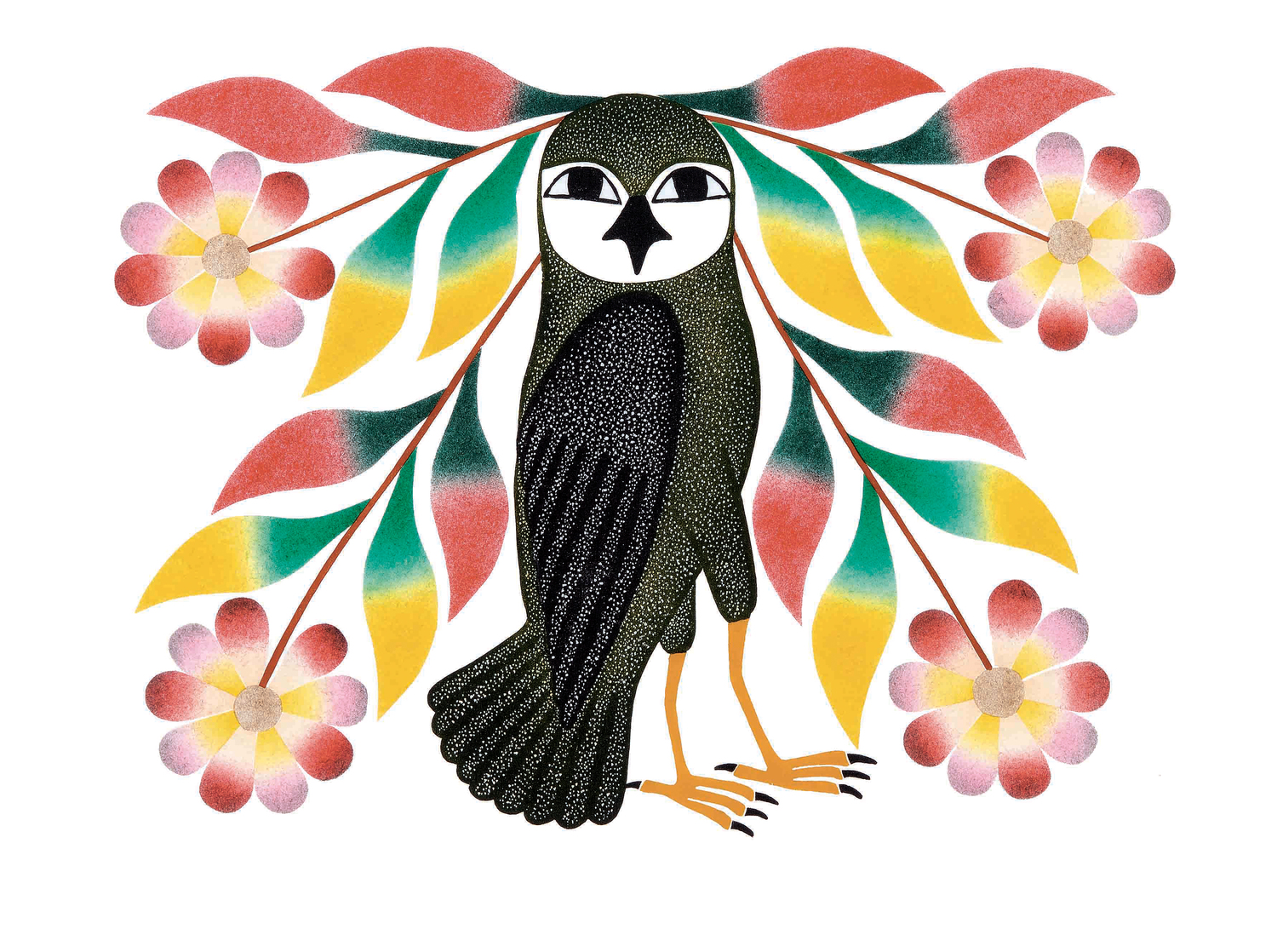Inuit Art – Graphics
“Printmaking in the Canadian Arctic started in Cape Dorset in the late 1950s. Working in poorly heated plywood buildings, a small group of interested people experimented with the use of local materials: supplies being brought in by ship once a year, conditions did not allow for elaborate printmaking techniques requiring complicated equipment.
From these early beginnings developed two very basic printmaking techniques: the stonecut and the stencil. Both require a minimum of equipment and technical training and, in Arctic printshops, have remained the most popular techniques to this day. Print collectors are attracted to the stonecut and the stencil because in both techniques every step within the printmaking process is carried out manually, making each impression a multi-original.
In the Canadian North, the role of the artist who does the drawing and that of the printmaker who renders the print are normally quite seperate. Usually the artist does his or her drawing at home, later selling it to the local co-operative that runs the printshop. It may then eventually be chosen by the full-time printmakers working in the printshop as the image for a print.


